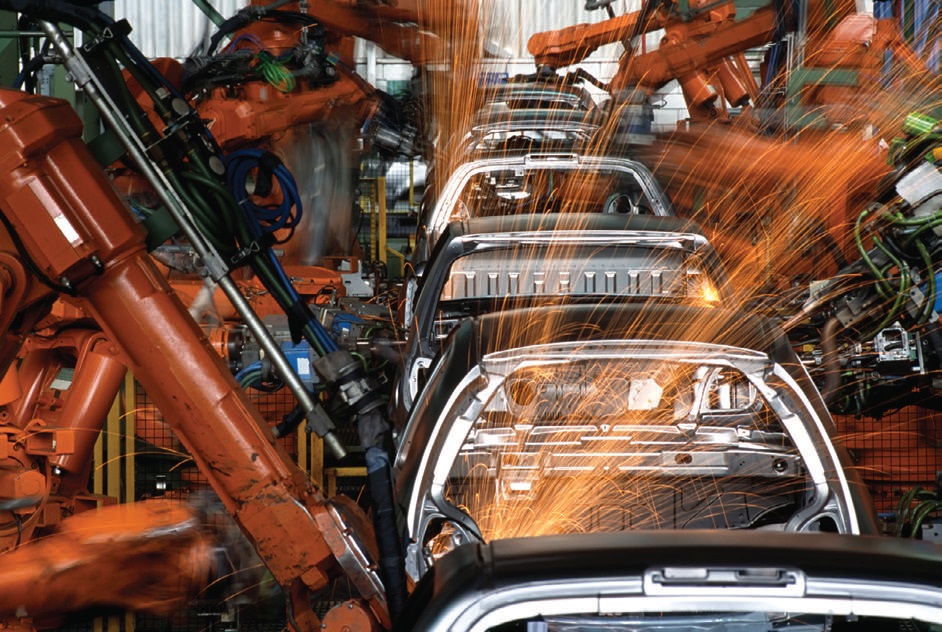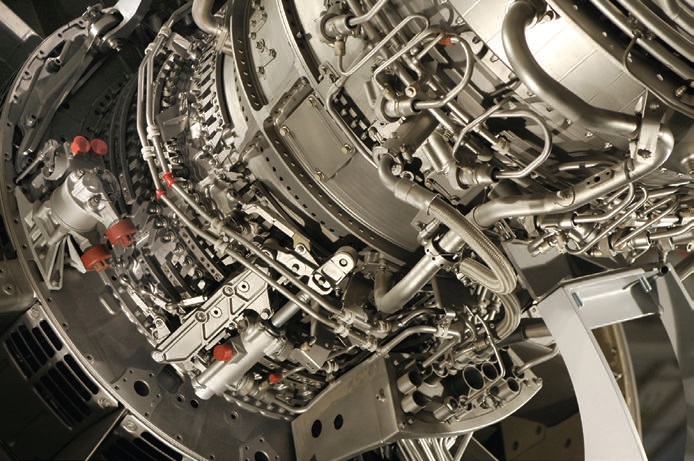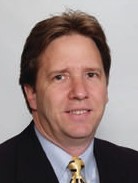Lubrication technology and management: The next 10 years
Mike Johnson | TLT Best Practices February 2011
Our panel of experts looks at corporate culture, emerging technologies and why time equals money when it comes to machine maintenance.
The commentators
The following industry veterans were asked to provide an overview of lubrication technology in the last 10 years and also to provide their outlooks for the next 10.
Charlie Fast, CMRP. Charlie is the shared services superintendent at Mosaic Co. In Plymouth, Minn. Charlie has worked at Mosaic (and previous entities with other names) for 26 years, holding management positions in operations and maintenance. Currently Charlie supervises predictive maintenance contractors, training, repair shops, lubrication vendors and contractors and coordinating reliability engineering activities between sites. Contact him at
charlie.fast@mosaicco.com.
Mark Geller, CMRP. Mark is vice president of Allied Reliability Services, an engineering, consulting and service firm focusing on preventive and predictive maintenance for more than 200 manufacturing plants and facilities in North America, Latin America and Europe. Mark has been with Allied Reliability for seven years and in the reliability Industry for 12 years. Mark provides education/training support and manages field operations. He holds a bachelor’s degree in engineering and is certified in vibration, UE, motor testing and machine lubrication. Contact him at
gellerm@alliedreliability.com.
Deepak Kotnala. Deepak is CEO of Lubritech Technologist in New Delhi, India. He has 16 years of experience in marketing and 10 years extensive experience in technical selling of lubricants, including designing, formulating, application study and performance evaluation, with strong expertise in MWFs and grease development. He is an independent marketing and technical consultant for various lubricant manufacturers, providing training, formulation of marketing strategy and development. Contact him at
deepak@lubritechnologist.com.
David Northrop. David is a reliability engineer for Applied Reliability Group/Shops and process manager for USS-Posco Industries, Steel, Sheet and Tin. He has 25 years of experience with mechanical engineering/design and construction of capital machinery and 14 years of experience in steel mill engineering, machine shop operations and maintenance engineering/maintenance reliability engineering. Contact him at
dnorthrop@ussposco.com.
Matt Spurlock, CMRP. Matt is area manager for Reliability/Lubrication for Packaging Corp. of America. He has 20 years in the oil analysis industry from the end-user side in the U. S. Marines through full lab testing and analysis. Matt has designed and implemented high-impact lubrication, contamination control and industrial oil analysis programs throughout the U.S. His certifications include MLA II, MLT I and LLA I. He is a frequent co-contributor to this column. Contact him at
matt.spurlock@gmail.com.
The only constant in life is change. Some changes occur slowly, such as the change of a work-culture within an industrial facility. Some changes occur at a dizzying and unsettling pace, such as the shutting of plants and the loss of jobs and economic well-being.
Technological change rolls along at a fairly constant and intense pace. Just 30 years ago desktop computers were first showing up in the market and being adopted by companies in information-intensive business, including medicine, finance and law. 20 years ago leading manufacturing companies were in the early stages of implementing PC-based maintenance-management systems, although for many it was a migration from either a mainframe or a paper/card-file system. Ten years ago machine reliability management as a competitive concept was in its early stages for large manufacturing companies after a quick start with a few aggressive early adopters. Today, reliability management is firmly recognized by most Fortune 1000 managers as an avenue to achieve competitive advantage.
Change in the lubrication management approach taken by the same Fortune 1000 size companies is still a mixed bag of results. Too many companies practice the same haphazard approach to machine lubrication that they did 30 years ago—trying to keep the sight glass full, greasing bearings periodically and changing the sump annually. Others place special emphasis on the benefits that may be found through precision lubrication plans.
This roundtable discussion is a collection of thoughts from key managers within steel, paper, chemical and services businesses. We asked them to briefly survey the last 10 years and think forward about the changes that may occur in the next 10. Managers in this discussion are close to the trenches, each sharing significant experience promoting change and improvement in their respective endeavors. See the adjoining box for the commentator lineup.
MACHINE LUBRICATION PRACTICES
MJ: What is the relative importance of machine lubrication practices for your site?
Matt Spurlock: We feel there is no single focus that will have a higher impact on machine reliability than a fully optimized, fully documented and properly implemented precision lubrication program. Industrial operations average roughly 10% of their maintenance budgets on repairs and labor charges for lubricated components due to poor lubrication practices. It simply makes sense that laying a base of proper lubrication practices will enhance and optimize manpower in front of machines.
Dave Northrop: An effective lubrication program in a steel mill operation is critical. When a piece of equipment or a line goes down due to a lubrication-related failure, it means lost profits. That’s the bottom line when it comes right down to it: time is money. To keep the equipment running—that is, making money—you must have a lubrication program that keeps machines operating at maximum performance while saving costs by efficiently utilizing your lubricants. Downtime can easily cost more than an investment in an effective machine lubrication program and practices.
Deepak Kotnala: The importance of machinery running at its full potential is of foremost importance for any industry. In the present industrial trend, everything moves so fast that major manufacturing, including auto manufacturers, are aiming for zero inventory. To achieve that, the vendor also has to be capable of operating continuously to maintain the supply schedule; otherwise he has to build in spare capacity, which is not possible due to budgeting/space constraint. Effective lubrication programs are central to achieving sustainable production.
Charlie Fast: Machine lubrication is one of the most important elements in maximizing asset life and reliability. It is easy to assume a good program exists. However, good is the enemy of great. Thinking we are good means we overlook opportunities to improve things that would make us great.
Mark Geller: The lubrication program is one of the most important aspects of a reliability program and is often overlooked. I think many facilities believe they have a program and understand how to lubricate, but the fact is that most do not and cannot justify why they follow their current processes and procedures. To put it simply, if uptime or overall equipment effectiveness are important measures in an organization and it has lubricated equipment, then a highly effective lubrication program should be high on the priority list.
 ‘A piece of equipment or a line going down due to a lubrication-related failure means lost profits.’
‘A piece of equipment or a line going down due to a lubrication-related failure means lost profits.’
www.canstockphoto.com
FULLY OPTIMIZED LUBRICATION PLANS
MJ: What would a fully optimized lubrication program cover in a manufacturing and industrial site?
Dave Northrop: The program would address all aspects of lubrication at the plant, including storage, handling, contamination control, condition monitoring/reporting and controlling or eliminating leakage. It would include trained personnel who take ownership of lubrication in the facility and are armed with the proper equipment and tools to operate in a best practices mode.
The personnel would include craft people and a lubrication engineer specifically trained in the field of tribology. These people would have intimate knowledge of the physical assets they work with so that informed decisions can be made while working within or along side the existing maintenance structure. They would communicate at the appropriate levels so there is trust established and action taken from the recommendations.
For a good-sized facility, this would mean several lube techs and at least one engineer working full-time on the lubrication program. They would work with the maintenance department(s) to accomplish common goals. These could include improved asset reliability, less material consumption, proper lubricant handling and disposal, proper fluids/lubricants and lubricant conditioning for each application at the best cost structure in order to increase the bottom line profits which ultimately will pay for the program.
Charlie Fast: Ideally, those involved in lubrication activities would be responsible for servicing the machines, providing hands-on lubricant application and inspecting equipment for any evidence of deficiency. In an advanced state, technicians would be thoroughly trained and fully aware of the importance of cleanliness and accuracy within their responsibilities. At that point people running the programs would know enough that each could also identify deficiencies within their respective programs.
It also would be ideal to have all the sites performing the same work at the same level of quality, but different plant cultures and work rules make that difficult. The cultures differ significantly between sites for what effective lubrication looks like. All of this is dependent on knowledgeable people who have adopted the company’s vision.
Matt Spurlock: A properly designed lubrication program must cover all aspects of plant lubrication. This includes input into the following:
•
How lubricants are stored, received and applied (by whom, with what, how often, how much).
•
All lubrication-related tasks (including contamination control).
•
Develop lubrication requirements: regrease volumes & frequencies and oil-change intervals (time vs. condition- based).
•
Establish PdM coverage: what is sampled, how often and the test slate.
•
Develop oil analysis alarm points that fit the reliability objectives.
•
Develop lubrication routes that include all relevant tasks.
•
Incorporate oil analysis routes into regular lubrication routes (allows for single pass work flow).
•
Establish program ownership: defining key performance indicators and supporting continuous improvement efforts.
One aspect that is often overlooked is oil analysis. This should be a fundamental element in the predictive program. Route optimization is another aspect often overlooked that can save significant dollars as it relates to manpower requirements.
A DECADE IN REVIEW
MJ: How has your organization’s approach to machine lubrication changed in the last 10 years?
Mark Geller: I have been fortunate enough to be involved with facilities/organizations that at least understood what “good” looks like. Our challenge has been achieving and maintaining that level. I believe the change that has come into our organization occurred through learning how to convert lubrication theory to a realistic field application that is sustainable and how to integrate it into the reliability effort. We now understand how to design programs and know what standards need to be in place and how to implement them.
Matt Spurlock: There is nothing more dangerous to equipment reliability than an untrained lubrication technician. Training has come a long way in the past 10 years. All lubrication technicians have been trained with most of them passing at least a Level I certification. Additionally, the use of today’s technology in the form of PDA-assisted basic care routes has resulted in an optimized method of reporting problems found by the lubrication technicians.
Deepak Kotnala: Consumers are becoming more educated. Looking back 10 years, lubricants were never considered important to production. From the last 4-5 years, due to presence of multinational giants in the Indian market, the scenario has changed from commodity lubricants to greater use of performance lubricants. People have started asking detailed questions about lubricant performance capabilities. Ones that used to simply ask for a gear oil now want to know about the oil’s additive makeup, whether they are designed to minimize micropitting, whether they are fully compatible with seals, what impact they have on different metals, etc.
Charlie Fast: The biggest changes have occurred around training and knowledge development to create a cultural change in how we view machine lubrication. We have both lubricant vendors and consulting companies like AMRRI providing training to increase awareness of the machines’ precise lubrication requirements in order to reinforce the need for improvements. We are working diligently to get enough people to become aware and engaged to make the changes stick.
LOOKING AHEAD 10 YEARS
MJ: What do you think will be different about how organizations will conduct machine lubrication practices by 2020?
Matt Spurlock: I believe technology will play a strong role moving forward. Integrating lubrication practices into the overall reliability program rather than considering them a stand-alone practice will become the norm rather than the exception. Developing corporate level minimum standards will play a huge role in ensuring that every plant within a company is performing to an acceptable level.
Dave Northrop: I believe there will be more focus on and understanding of lubrication best practices along with a slight increase in investment in lubrication programs as companies increasingly understand the effect lubrication has on the assets. There will, of course, be advancements in technology to monitor machine conditions and help with leak management, including sensors that can give basic fluid condition
in situ, eliminating or decreasing the frequency of sampling times. Companies will still be slow in their investment due to focus on immediate returns rather than having a longer-term requirement of their investments.
Deepak Kotnala: In India users will continue stressing product performance. We also expect increasing awareness and use of condition monitoring equipment and technology. These technologies enable lubricant manufacturing companies and independent lubricant consultants to stress lubricant performance rather than price. As access to condition monitoring and knowledge of product performance both increase, we believe we’ll see increased demand for high-performance products. When you add shrinking sump sizes, increasing output requirements, growing environmental concerns and more government regulations, lubricant manufacturers will have to deliver products that provide better lifecycles with improved environmental friendliness.
Mark Geller: I think, as with most industries, we will continue to see new technologies that assist in refining programs, from testing lubricant properties to determining how the lubricant gets to the equipment. I also believe precision lubrication will become much more important to companies as they work to stay competitive in their respective industries.
Charlie Fast: We plan to work on how we communicate with one another by implementing more information technology. For instance, when they become more cost-effective we intend to increase the use of sensors to monitor fluid properties and contaminant levels.
If we could easily integrate the use of handheld sensors and work-loggers into SAP/Maximo to schedule practices, we might try that as well. The integration is challenging. We also need to figure out how to keep the lubricants and machine sumps cleaner than we have in the past.
 ‘Precision lubrication will become much more important to companies as they work to stay competitive in their respective industries.’
‘Precision lubrication will become much more important to companies as they work to stay competitive in their respective industries.’
www.canstockphoto.com
EXPECTATIONS AND ORGANIZATION CHALLENGES
MJ: What are the organizational changes required for companies looking to be successful in achieving expected program/practices changes?
Deepak Kotnala: To achieve success there has to be more technically qualified people involved with the programs. Technical qualifications will include an understanding of machines and lubricants. Educational programs provided by STLE and others will be critical to expanding the available resource. In India education and certification through the Tribology Society of India has helped people become more aware of the job to be performed.
Charlie Fast: We need to elevate the perception of the value of lubrication engineering within the organization. Greater Recognition of their value would enable us to have one person on staff dedicated exclusively to lubrication program improvement at all sites. This would also greatly improve the consistency between practices and programs at different sites.
Matt Spurlock: There truly needs to be a champion at the corporate level who can help with the standardization process. This also holds true at the plant level. Even the best designed program cannot get traction if there are no champions at any level of the organization. Even missing one will result in mediocre impact.
Dave Northrop: Companies must understand and accept the long-term returns and importance of an investment in well-trained and certified personnel and in handling and condition monitoring equipment—basically a focused lubrication program. We need to increase the understanding that lubricants are the life-blood of the manufacturing company’s assets. The company should increase investment in not only the physical assets but also the fluids with which the machines operate.
Mark Geller: With any program or implementation, getting sustainable results is based upon leadership and on the organizational changes that we make. We have found that defining the standards of how and what will be done, putting a process in place to improve upon those standards and measuring our success usually puts facilities on the road to success.
 Mike Johnson, CLS, CMRP, MLTII, MLA1, is the principal consultant for Advanced Machine Reliability Resources, in Franklin, Tenn. You can reach him at mike.johnson@precisionlubrication.com
Mike Johnson, CLS, CMRP, MLTII, MLA1, is the principal consultant for Advanced Machine Reliability Resources, in Franklin, Tenn. You can reach him at mike.johnson@precisionlubrication.com.